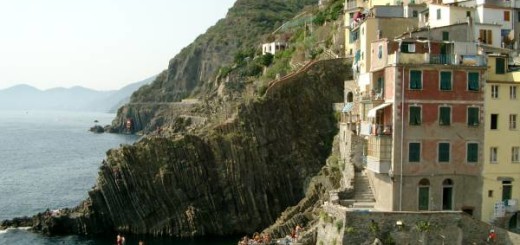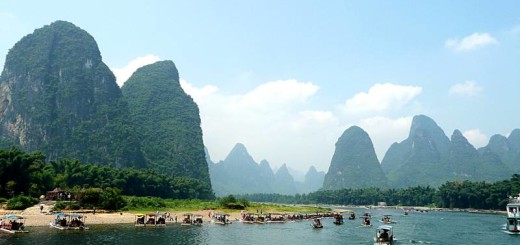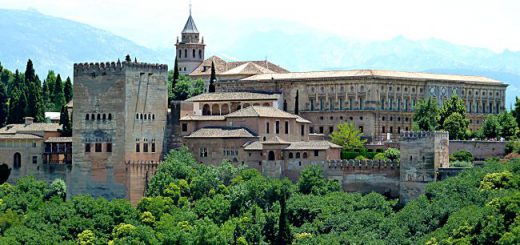Salzburg and the Sound of Music

Millions of tourists come to Salzburg each year to pay homage to Wolfgang Amadeus Mozart (1756-91) who was born here and lived here for his first 25 years. A museum devoted to him and his work can be found at his Geburtshaus (birth house) in Getreidegasse. A monument was erected to Mozart in 1842 in his eponymous square and there are many shops selling Mozart memorabilia and chocolates.

Nestled between two hills, Salzburg is dominated by the mighty Hohensalzburg Fortress which was begun in 1077 and reached its final form in 1510. It is possible to take a cable-car to the top and a tour of the castles’ interior and museum.

Of course there are many other features to attract visitors to Salzburg’s Old City with its Baroque architecture. Most of the Old City was destroyed by fire in 1598 and afterwards the Prince – Archbishop initiated a grand building program. Five squares were created in the process, including the Mozart Square. Residenz Square with its richly decorated baroque fountain is probably the largest and most beautiful square. Fifty-five medieval buildings were torn down to make room for the square.

On one side of the square is the Old Residenz which now houses a gallery of Dutch Old Masters. The New Residenz, taking over one hundred years to construct, now contains the Salzburg Museum and is crowned by the famous Salzburger Glockenspiel, a carillon in the bell tower which was installed in 1704. It currently plays approximately 40 melodies using 35 bells.
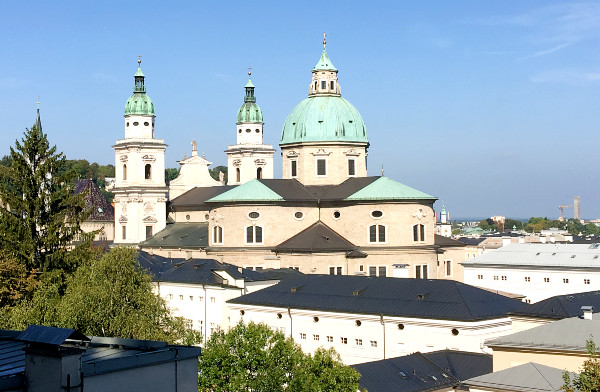
The Salzburger Dom takes in another side of the Residenz Square. This Baroque cathedral was constructed between 1614 and 1628 but the dome had to be rebuilt following bombings in 1944. This was where Mozart was baptised and later played the organ.
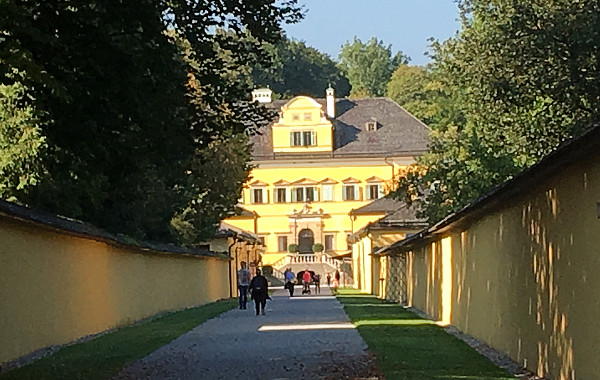
But the drawcard in Salzburg for those who are not classical music fans, is the Sound Of Music Tour. There are many versions available and our coach tour group was booked into one of them. The tour took us to many of the sites shown in the film, such as the Hellbrunn Palace which although not a film location, now contains the reconstructed glass gazebo – the setting for various love scenes, like “Sixteen Going on Seventeen” and “Something Good”.

The Nonnberg Abbey, a Benedictine convent complex dating back to about 714 AD, features both in the Sound Of Music and the actual real-life events upon which the film is based. Maria Auguste Kutschera was in fact a novice here and her marriage to Baron von Trapp took place in this church, though not in the film. Scenes shot here include the opening part where the nuns go to mass singing the song “Maria”, the scene where the children come to the abbey’s gate to ask for Maria and the escape scene, where the cars are parked outside the Abbey Gate. As our group left the Abbey, walking down the Festungsgasse and a narrow lane that gave great views over the city, we took the opportunity to burst into enthusiastic renditions of “Do – Re – Mi” and “My Favourite Things”!

The lane brought us out onto the entrance of St Peter’s Abbey, Cemetery and Catacombs. St. Peter’s Cemetery, founded in the 7th century, was where the dramatic flight scenes were filmed. Pursued by the National Socialists, the Trapp family fled through St. Peter’s Cemetery, finding a secure hiding place in the dark recesses before ultimately escaping safely to Switzerland. The Catacombs, hewn out of the Mönchsberg rock, are one of the special attractions in St. Peter’s Cemetery and are said to be of early Christian origin.

After the tour we had some free time to further explore the old town. We had gone walking the evening before looking for a place to have dinner and visited the Augustiner Bräu, Austria’s biggest beer tavern and brewery, at the foot of Mönchsberg hill. It has an indoor seating area of 5,000 m2 and boasts a further 1400 seats in the outdoor beer garden. Regional and traditional dishes can be bought directly from various food stands in the “Schmankerlgang” (Delicatessen arcade). The place was buzzing and a bit overwhelming, so we walked along beside the Salzach river and crossed to the other side of town where there were plenty of restaurants to choose from.

Next day in the sunlight were amazed at how sheer and close the rock face of the Mönchsberg was to the Getreidegasse. This is Salzburg’s popular shopping street housing international fashion chains, traditional shops and restaurants. The architecture of the Getreidegasse is characterized by beautiful doorways and arcaded passageways which feature artworks, art galleries and shops. A particular highlight of this street are its ornamental and often quite elaborate guild signs protruding from the building facades, high above pedestrians’ heads.

We had just enough time to try a crispy Austrian style pizza at a cafe on Mozartplatz before our coach departed for its final destination, Munich. There our tour group met one last time for a farewell dinner and next morning we picked up our rental car for a road trip to the Black Forest, via Dachau.
